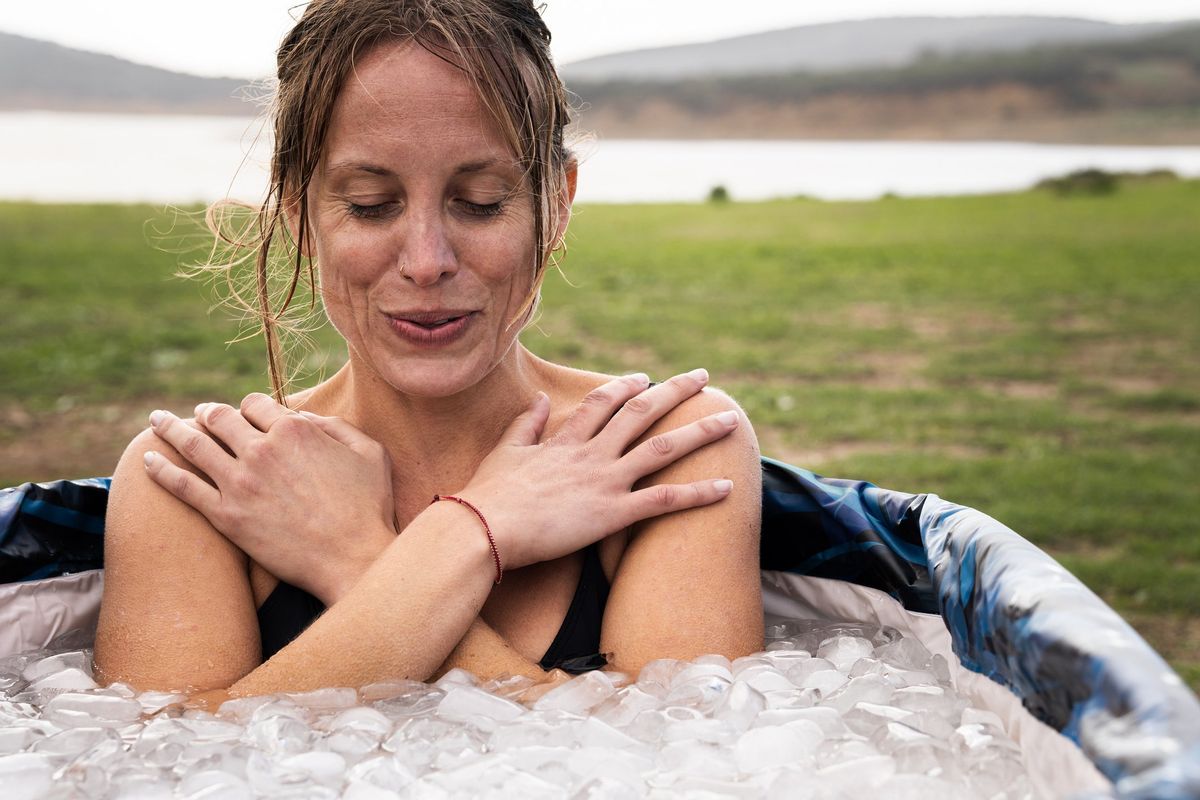I’m from Michigan so I know what cold is. I now live in Las Vegas — because I know what cold is.
All those years digging my car out of the snow has given me freeze-phobia — I try to avoid anything that’s even associated with the cold. I drink hot tea. I prefer my true crime cases solved. I don’t know where Iceland is on a map. And I’m a fan of Netflix — you can keep the chill.
It’s hard for me to wrap my brain around doing anything arctic on purpose. But cold plunges have become increasingly popular in recent years, especially on social media. The hashtag #coldplunge has more than billion views on TikTok, and “cold plunge women” has more than 144 million posts.
Read: The Latest Fitness TikTok Trends: Heart or Hype? >>
What is a cold plunge?
A cold plunge, also called cold-water immersion, is when you submerge yourself in frigid water (around 50 degrees) in an effort to achieve physical and/or mental health benefits. Think of a bathtub filled with cold water and ice cubes or a chilled body of water like a lake.
Cold plunging isn’t new — the icy pastime dates back to ancient Greece. And you’ve probably seen athletes and entertainers like Lady Gaga posting photos of ice baths after a taxing workout.
The benefits of a cold plunge
Supporters of the plunge say it can help improve health conditions such as inflammation and chronic pain, as well as promote overall well-being.
Research on the benefits of cold plunging is ongoing, and most of the studies out there right now involve small groups of people. But there is some science to note behind the potential health perks of cold plunging.
Possible benefits may include:
- Decreased pain and inflammation: During a cold plunge, your blood vessels narrow to save body heat, which reduces blood flow and decreases inflammation, swelling and nerve activity. The cold also numbs the body, which can decrease pain.
- Improved mood: Getting chilly with it releases feel-good chemicals in your brain such as dopamine and serotonin, and studies have linked cold-water immersion to a positive shift in mood and increased self-esteem. A 2023 study found five minutes in a cold-water bath made participants feel more alert, proud and inspired.
- Lower levels of cortisol: A cold plunge may naturally help decrease levels of the hormone cortisol. Your body releases cortisol during stressful situations, and high levels of cortisol can lead to serious health problems such as high blood pressure. One study found that people who spent 15 minutes in cold water had lower levels of cortisol for up to three hours after being in the water.
- A metabolism boost: When you shiver — as one should in freezing water — your muscles contract. This increases metabolic rate and helps you burn more calories than you would if you weren’t in the cold water. Studies also show that cold plunging has a positive effect on brown adipose tissue, a type of body fat that is activated by cold and helps burn calories. However, the boost is not enough to aid in weight loss without the addition of lifestyle and dietary changes.
- Better blood sugars: Repeated cold-water immersions may increase the level of a key protein in the body that protects against insulin resistance.
- Increased immunity: Some research has linked cold plunges with an increase in white blood cells, which means your immune system may be stronger against infection.
How long should you cold plunge?
It takes anywhere between three and five minutes for the cold to penetrate past the skin, so most people stay in the water between five and 10 minutes.
Beginners typically start at 30 seconds or a minute and work their way up.
The time spent in the water also varies depending on the temperature and your comfort level, but staying in for more than 10 minutes increases the risk for hypothermia.
Who shouldn’t try cold plunge therapy?
Anyone with a chronic health condition should talk to a healthcare provider before trying cold-water immersion.
A cold plunge can cause increased breathing, heart rate and blood pressure. This can put stress on the heart and may cause abnormal heartbeats, so people with heart disease or a heart condition should avoid cold plunging.
You may also want to skip it if you’re living with:
- Diabetes
- Cold agglutinin disease
- Thyroid disease
- Raynaud’s syndrome
- Nerve pain
- Venous stasis
Other risks of cold plunging include drowning and hypothermia.
Should you take the plunge?
Cold-water immersion isn’t for everyone. And without significant research, it’s hard to know if the potential health benefits are worth the freeze. Talk to your healthcare provider before jumping in.







